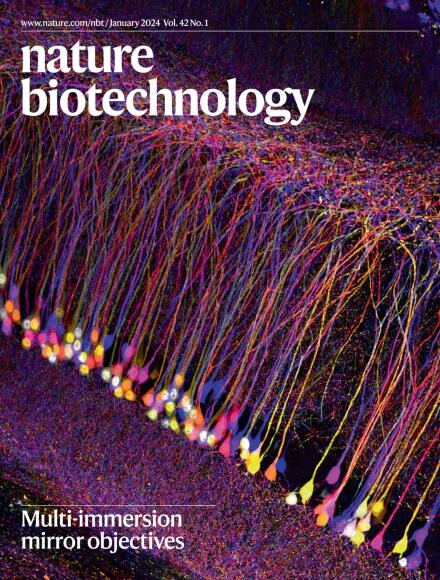Computationally designed enzymes show potent catalytic activity
IF 41.7
1区 生物学
Q1 BIOTECHNOLOGY & APPLIED MICROBIOLOGY
引用次数: 0
计算设计的酶显示出强大的催化活性
通过计算设计酶的活性水平与自然界中看到的酶相匹配仍然是一项艰巨的挑战,通常需要大量的实验室优化。Listov等人在《自然》杂志上发表文章,他们克服了这个问题,描述了一种使用原子建模来计算设计高效的新生酶的方法。作者运用他们的方法设计了一种用于Kemp消除(KE)的催化剂,这是一种非自然的质子提取反应,可作为从头设计酶的模型。该工作流程使用天然蛋白质骨架片段来组装和稳定骨架变化,这些变化可能会将所得到的酶置于催化能力强的星座中。然后使用几何匹配和罗塞塔原子计算来定位KE酶在这些结构中的位置,并通过突变来优化活性位点。选择73个设计进行实验测试,其中3个设计显示KE活性。低通量筛选进一步提高了它们的催化效率。表现最好的设计包含140多个突变和一个不同于天然支架的活性位点群。
本文章由计算机程序翻译,如有差异,请以英文原文为准。
求助全文
约1分钟内获得全文
求助全文
来源期刊

Nature biotechnology
工程技术-生物工程与应用微生物
CiteScore
63.00
自引率
1.70%
发文量
382
审稿时长
3 months
期刊介绍:
Nature Biotechnology is a monthly journal that focuses on the science and business of biotechnology. It covers a wide range of topics including technology/methodology advancements in the biological, biomedical, agricultural, and environmental sciences. The journal also explores the commercial, political, ethical, legal, and societal aspects of this research.
The journal serves researchers by providing peer-reviewed research papers in the field of biotechnology. It also serves the business community by delivering news about research developments. This approach ensures that both the scientific and business communities are well-informed and able to stay up-to-date on the latest advancements and opportunities in the field.
Some key areas of interest in which the journal actively seeks research papers include molecular engineering of nucleic acids and proteins, molecular therapy, large-scale biology, computational biology, regenerative medicine, imaging technology, analytical biotechnology, applied immunology, food and agricultural biotechnology, and environmental biotechnology.
In summary, Nature Biotechnology is a comprehensive journal that covers both the scientific and business aspects of biotechnology. It strives to provide researchers with valuable research papers and news while also delivering important scientific advancements to the business community.
 求助内容:
求助内容: 应助结果提醒方式:
应助结果提醒方式:


